New York schools strive to mitigate pandemic’s impact

Liam Moriarity, a student at Dutchess Day School, set to work on a writing workshop with his teacher from the comfort of his home. Photo courtesy of Dutchess Day School

HARLEM VALLEY — When school districts across New York state closed in response to the coronavirus outbreak this past March, it was understood by everyone — from administrators and teachers to the families with children enrolled in those districts — that the closure was the only solution to ensure the health and safety of all students and staff. However, this was back when school districts were maintaining a sense of cautious optimism about the possibility of schools reopening and classes resuming. On Friday, May 1, Governor Andrew Cuomo announced that schools would be closed statewide for the remainder of the 2019-20 school year. However disappointed students and schools were by the decision, Cuomo’s announcement offered closure to families and school personnel waiting for an answer from the state along with incentives to start looking ahead to the next school year.
With just a few weeks left of the 2019-20 school year, area school districts have continued remote learning. Commending educators for maintaining their virtual connections with students throughout the pandemic, New York State United Teachers (NYSUT) President Andy Pallotta offered insight for how education could potentially be re-imagined throughout the duration of the COVID-19 crisis.
“NYSUT believes in the education of the whole child,” Pallotta stated in a recent press release. “Remote learning, in any form, will never replace the important personal connection between teachers and their students that is built in the classroom and is a critical part of the teaching and learning process.”
Pallotta suggested the state start “addressing the need for social workers, mental health counselors, school nurses, enriching arts courses, advanced courses and smaller class sizes in school districts across the state.”
In the Harlem Valley, school district personnel have assessed the impact of the closure on students’ academic development as well as on their social-emotional growth.
Pine Plains Director of Pupil Personnel Services Janine Babcock reported to the Pine Plains Board of Education (BOE) on Wednesday, May 6, that the district’s mental health providers have continued to offer therapy to students and its mental health professionals have been contacting students enrolled in Alternative Education Program (AEP) counseling to organize sessions. She added that in addition to the AEP sessions, these professionals have also offered help to any student or family in crisis during the COVID-19 pandemic.
Now that they know they won’t be going back to school this year, Babcock told the BOE that students are struggling. She said the district has good mental health support, includingt two counselors from Astor Services for Children & Families. When asked by the BOE if there have been any students “dropping off” in their academic progress after finding out that they wouldn’t be returning to school, Babcock again acknowledged that there are students who are struggling and praised both the teachers and the mental health professionals for reaching out to students.
“I do think kids are struggling, recognizing that this is their new normal for the rest of the year,” Babcock told the BOE. “I think it really hit us all; I think we all knew it was coming… so yeah, I think everyone’s kind of in that place of ‘OK, so this is what we’re doing’ and we keep moving on for the kids because it’s about the kids.”
Considering how the public education system has changed over the past few months, Webutuck Superintendent of Schools Raymond Castellani extended his thanks to the North East (Webutuck) Central School District’s staff and principals for guiding the district’s smooth transition to distance learning during the closure. He also pointed out how the instructional technology used in the district — particularly the district’s 1:1 iPad initiative — helped students transition from learning in the classroom to learning at home.
“That being said, there is no learning like learning with a teacher working with students,” Castellani said, “and that is to facilitate instruction, to work with students, to deal with their educational component and their social-emotional component. Students have friends that they work with every day, that they see every day, and we should not minimize that with the importance of social growth.”
While he is looking forward to the day when school can resume, Castellani said that, for the time being, he is proud that the district is working with the students and their families to learn “what is happening each and every day.”
Speaking as someone who has had the unique opportunity of watching students thrive with the knowledge they acquire in the classroom, Monica Baker, an English as a Second Language teacher at Webutuck Elementary School, emphasized the value of creating strong connections with students and their families, especially now that COVID-19 has prompted families to assume the role of teachers and students to continue their education from home. At the beginning of the closure, Baker said she initially focused on the academic side of her work and on what she could do to get her students to continue with their lessons. A few weeks into the closure, she shared how her focus shifted: Her daily conversations with students now begin with her checking in to see how they’re doing and what they need. Whether they’re have difficulties with food or issues with their WiFi, Baker has been able to gain an insight into the individual struggles that families have been dealing with during the pandemic.
“I think it was really great to have those close relationships with families,” Baker said, “to know that if you are in need of something, teachers are trusted people you can reach out to… Teachers are people we know and trust.”
Admiring the district’s creativity in bridging the social-emotional gap, Baker highlighted the popularity of the district’s “Feed our Families” program, which has been working to distribute food to Webutuck families and fulfill their nutritional needs.
In addition to getting instructional devices to families, she mentioned how the district has distributed mobile hot spots to families to provide them with internet access. Baker also reflected on the ways in which teachers have been reaching out to their students, whether they’ve been hosting virtual class meetings, sending out cards or organizing sharing time on an online platform to allow students a chance to connect with their teachers and friends.
“Even if we’re not in class together, we’re still connected and we still care about you,” Baker said.
Though she recognized the challenges of making sure everyone is engaged, Baker said that, overall, “I think we’re doing a pretty good job. I think every day teachers are working harder and longer than ever before, doing everything we can to stay connected to our students.”
Contested seats in the Dutchess County Legislature are close to home this election season, with Districts 19 and 25 covering the rural towns across the northern and eastern corners of the county. Though the candidates bring distinct experiences and perspectives, they share common ground on some of the biggest challenges facing local communities, including emergency medical services and affordable housing.
Here’s a look at the candidates.
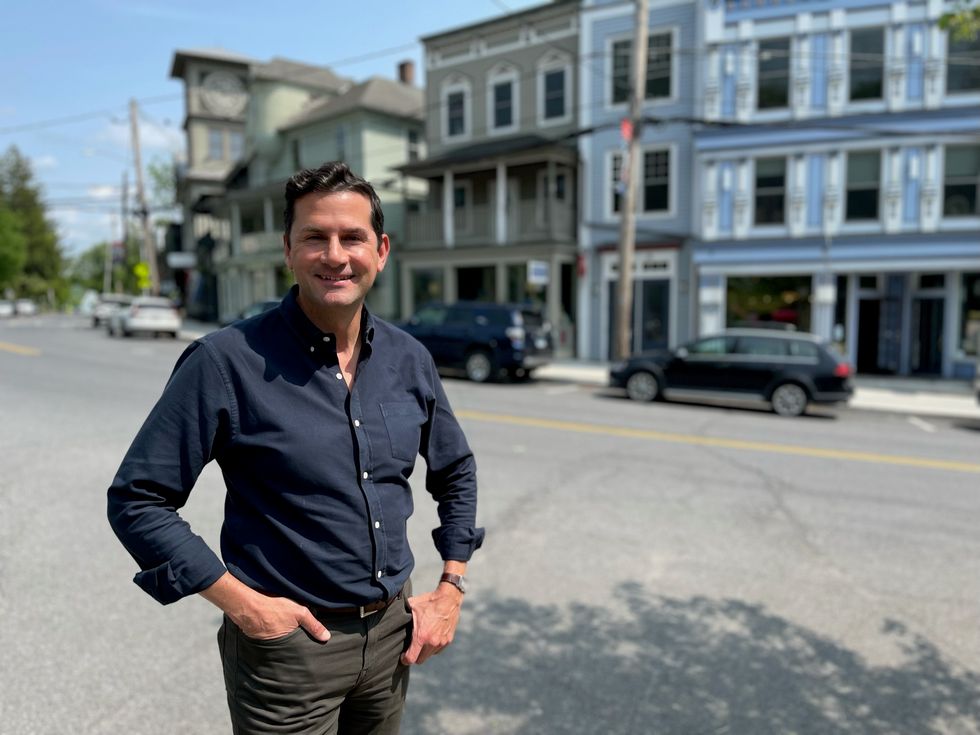
Incumbent Chris Drago is running for re-election at the end of his first term as county legislator. A lifelong Dutchess County resident, Drago said he ran in 2023 after realizing the northern part of the county wasn’t getting the attention it deserved. He unseated longtime incumbent Gregg Pulver and credits his first term with listening to constituents and moving the needle on local priorities.
“I’m interested in being re-elected so that I can keep up the work, continue to be an advocate for the community and to make connections in other areas that the county can’t necessarily help — like at the State or the Federal levels,” Drago said.
Drago recently helped municipalities like North East and Pine Plains access state funds after pushing to secure a $6 million grant for the Plus One ADU program. When the county declined to apply, he worked with Hudson River Housing, which “thankfully applied on behalf of several municipalities across the county.” That funding is now helping middle- and low-income families in the district.
Other key issues for Drago include improving county-wide emergency medical services, housing affordability, mental health access and protecting taxpayer dollars. He has advocated for EMS improvements, calling the county’s $2 million investment in supplemental services a “drop in the bucket” and a “Band-aid solution,” and he plans to push for a long-term fix. On mental health, Drago has helped coordinate advocacy that contributed to funding for an expanded Rhinebeck facility. “It’s a step in the right direction thanks to folks in the community being vocal and us working together to shine a light on this issue.”
Drago said he was elected in 2023 because voters wanted new leadership in northern Dutchess.
“I bring independence, transparency and a deep commitment to public service without strings attached,” he said. “I answer only to the people of District 19. I bring a proven track record of collaboration and a willingness to ask tough questions when taxpayer dollars or community needs are at stake.”
Emphasizing community over politics, Drago said, “I am not about one party over another. I’m about community, not politics. I can talk to anyone who’s willing to meet me halfway and who wants to be part of the solution. I really enjoy getting out and helping people.”
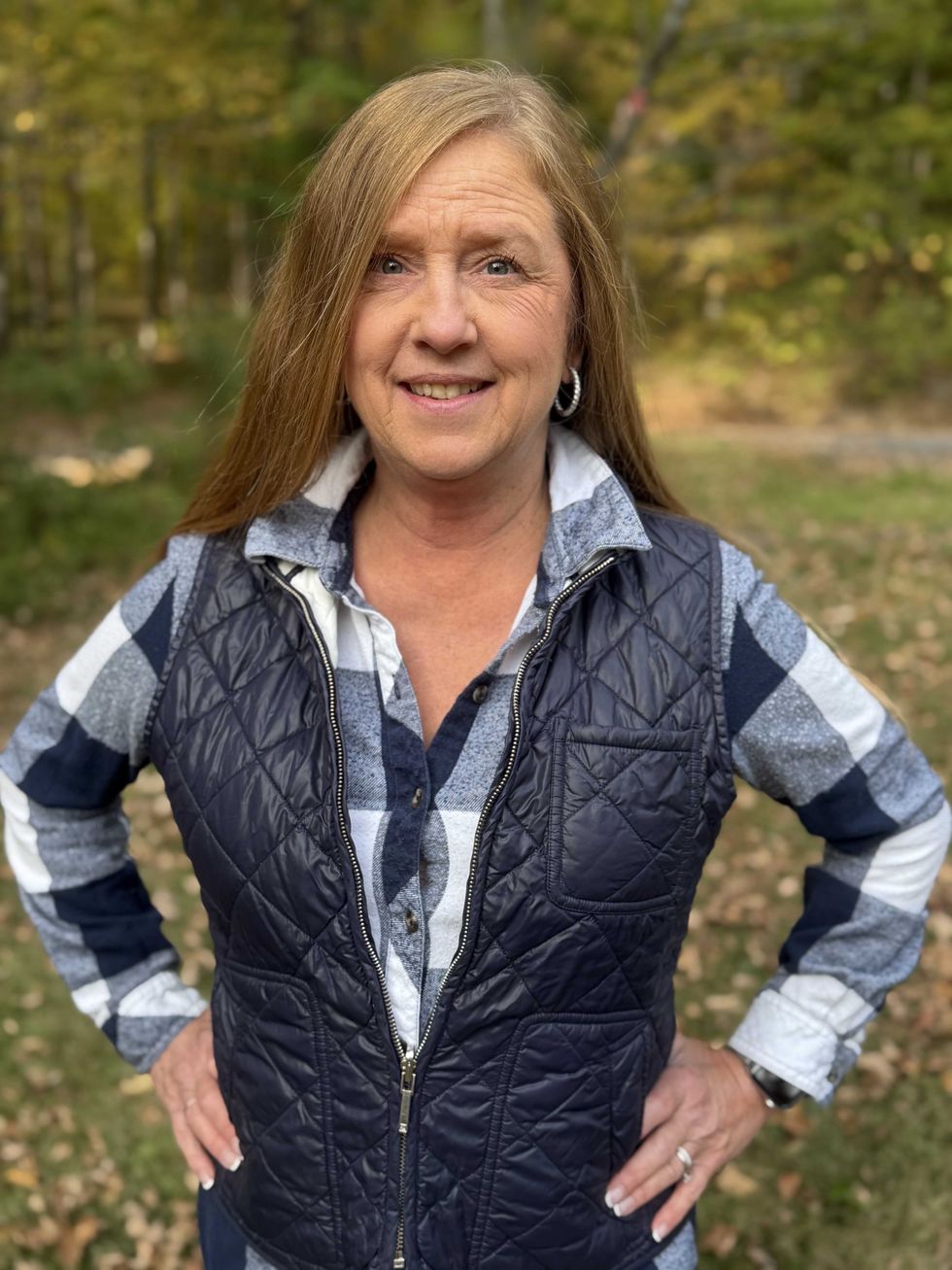
School psychologist Tonya Pulver, who works in the Millbrook Central School District, is seeking to unseat Democratic incumbent Chris Drago.
“No one was running against my opponent, and I’m a firm believer that a lot of people died for our right to vote, and we should also have a right to a choice,” she said. “If I’m going to be the one complaining, I should be the one doing something. So, here I am.”
Pulver said her background as a school psychologist gives her a perspective she plans to bring to the legislature. “I listen to people for a living, I take their perspectives and problem-solve. That’s my life, that’s what I do, and that’s what I will bring to the legislature,” she said.
She emphasized that her approach is nonpartisan. “I’m not political, it’s not about blue and it’s not about red, it’s about what’s best for our communities,” Pulver said.
Pulver’s top priorities include children’s mental health, housing affordability and emergency medical services. She noted that Dutchess County currently lacks pediatric psychiatric beds, forcing children to travel to Westchester for care. She also wants to increase funding for programs that educate vulnerable populations about the nuances of home-buying, and inspire developers to expand affordable housing in rural Dutchess County. “Rental costs are way overpriced. Supply and demand is out of control. We need more housing so that people who grew up here can continue to live here,” she said.
On EMS, Pulver said response times in District 19 are a challenge, though to be expected in rural areas. “District 19 needs to figure out as a whole what they need to do. There needs to be a multi-faceted approach that combines paid services and volunteers,” she said.
Pulver describes herself as a “fixer” and a doer. She cites her experience balancing full-time work and undergraduate and graduate school, along with volunteer work with Tails of the Tundra Siberian Husky Rescue and the Center for the Prevention of Child Abuse, as evidence of her ability to tackle complex challenges.
“I want to go in there and see some positive changes for our area,” Pulver said. “I plan on making calls, finding out what people’s concerns are, and taking their needs to the legislature. We can make improvements when we work together.”
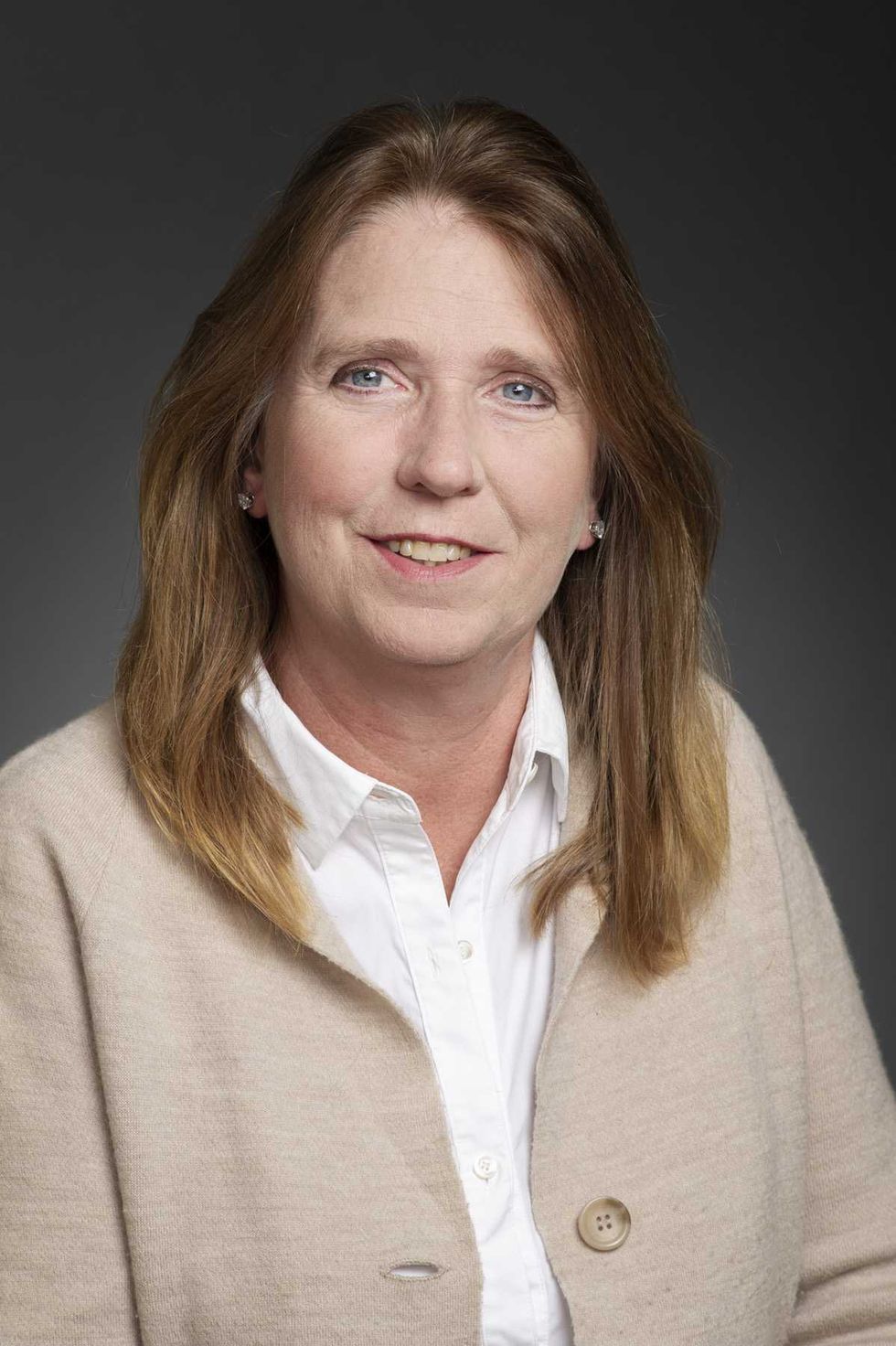
After nearly a decade in public service, Republican incumbent Dierdre Houston is seeking re-election.
Houston is finishing her fourth two-year term and currently serves as Majority Leader of the Legislature.She spent seven years on the Millbrook Board of Education prior to joining county government, which she described as “an important entry point into public service.”
“Being on the school board gave me a foundation in budgeting, contracts and negotiations,” she said. “But the county is on another level — bigger budgets, more people and a larger chain of command. It took a couple of years to really learn how to ask the right questions and get things done.”
Throughout her tenure, Houston has held several leadership positions, including Chair of the Government Services and Administration Committee and Assistant Majority Leader. She said she takes pride in being a visible, engaged legislator who regularly attends town board meetings across her district.
“If I’m not in conflict with another obligation, I’m there,” she said. “It’s important to know what’s happening locally so I can advocate effectively at the county level.”
A small business owner, Houston has run her Millbrook flower shop since 2013. She said strong organization and work ethic help her balance both roles. “I’m fortunate to have staff who support me, but I also put in long days. I believe in showing up and doing the work,” she said.
Houston identified emergency medical services, workforce housing and support for seniors and veterans as the top issues facing her district. “We’ve made progress on EMS response times, but funding remains a challenge,” she said, adding that “throwing money at a problem is not solving a problem, it’s about doing things in a responsible comprehensive way that is equitable to everyone, whether you live in remote areas or the populous areas.”
Houston added that “affordable and workforce housing also continue to be pressing needs, especially in small towns like Amenia and Millbrook.”
She said serving in government has given her the opportunity to make tangible differences, adding that “experience” is one of the main reasons to vote for her.
“When someone brings me a problem and I can help solve it — that’s what drives me,” she said. “I’ve built strong relationships, I know how to navigate the system, and I care deeply about this community.”
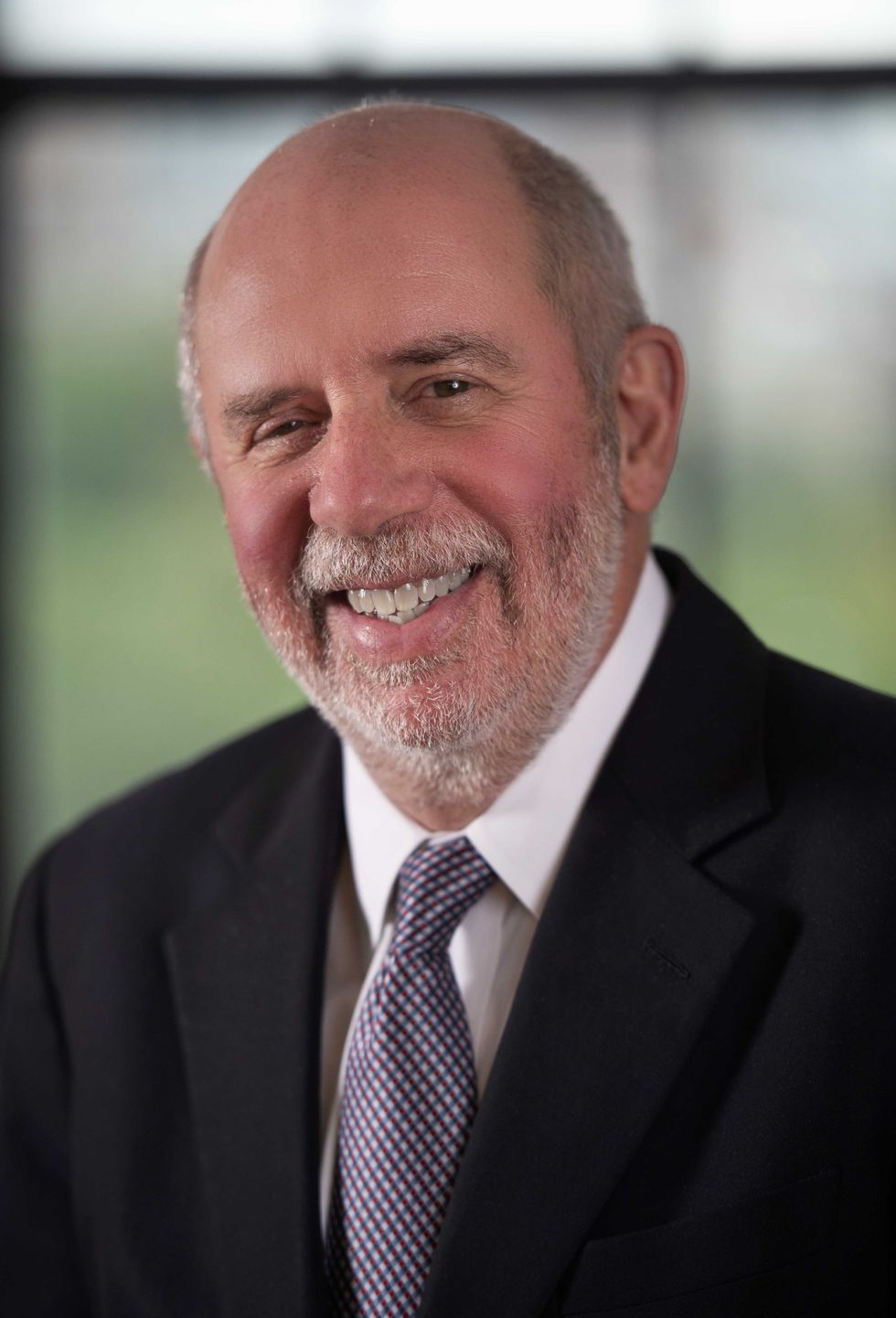
Eric Alexander, an experienced leader in marketing, finance and public service, is challenging incumbent Dierdre Houston.
Alexander said he was encouraged to run because he believes the Legislature needs “fresh energy, more transparency and a greater sense of accountability to residents.” He emphasized that his focus is on results, not rhetoric. “It’s frustrating for me when I can’t get something done,” he said. “You can either say you can’t, or you can make it happen.”
A seasoned leader in both the private and nonprofit sectors, Alexander serves as chair of the board of trustees at Emerson College. “When I was asked to chair the board, I was told that changing things in college is like moving a cemetery — you just can’t do it,” he said. “But in three years, we’ve hired a new president, written new bylaws, created a new strategic plan and even launched a new school. Everything that colleges need to do to remain viable — we’ve done it.”
As chair, Alexander said he shares responsibility for a $350 million operating company and a $300 million endowment. “I know every line of that budget — how to find the fat, how to find the waste — and how to act on priorities,” he said.
Alexander’s top priorities include addressing the county’s EMS crisis, improving public transportation and expanding housing affordability. “There’s nothing ideological about EMS. Everyone needs medical care,” he said, adding that “our rural communities need a different understanding of what our needs are and what’s reasonable for us.”
He criticized the county’s 2024 EMS investment as “a Band-Aid,” and said his first step would be to bring legislative representatives to Amenia, Millbrook and Pleasant Valley to meet with local officials directly.
Alexander expressed concern that without adequate transportation, District 25 residents have serious challenges getting to critical appointments and obligations. He asked, “Amenia is part of Dutchess County — why are we cut off from the rest of it?”
Housing, said Alexander, must also be treated as a regional priority. “The lack of housing is pushing young people out,” he said. “When young people look to Ulster County to find a home, that’s failure.”
Summing up his candidacy, Alexander said, “I bring professional experience on Wall Street and Madison Avenue, combined with years of community service. I’m doing this to win — and to move the legislature toward doing things differently.”
Weatogue Stables has an opening: for a full time team member. Experienced and reliable please! Must be available weekends. Housing a possibility for the right candidate. Contact Bobbi at 860-307-8531.
Hector Pacay Service: House Remodeling, Landscaping, Lawn mowing, Garden mulch, Painting, Gutters, Pruning, Stump Grinding, Chipping, Tree work, Brush removal, Fence, Patio, Carpenter/decks, Masonry. Spring and Fall Cleanup. Commercial & Residential. Fully insured. 845-636-3212.
SNOW PLOWING: Be Ready! Local. Sharon/Millerton/Lakeville area. Call 518-567-8277.
PUBLISHER’S NOTICE: Equal Housing Opportunity. All real estate advertised in this newspaper is subject to the Federal Fair Housing Act of 1966 revised March 12, 1989 which makes it illegal to advertise any preference, limitation, or discrimination based on race, color religion, sex, handicap or familial status or national origin or intention to make any such preference, limitation or discrimination. All residential property advertised in the State of Connecticut General Statutes 46a-64c which prohibit the making, printing or publishing or causing to be made, printed or published any notice, statement or advertisement with respect to the sale or rental of a dwelling that indicates any preference, limitation or discrimination based on race, creed, color, national origin, ancestry, sex, marital status, age, lawful source of income, familial status, physical or mental disability or an intention to make any such preference, limitation or discrimination.

Abstract artist Vincent Inconiglios' love and enthusiasm for color and form are evident all around him at his Falls Village studio, where he has worked for 25 years. He is surrounded by paintings large and small, woodcuts, photographs, collages and arrays of found objects.
The objects Inconiglios has found while out walking — in Falls Village, near his studio on Gansevoort Street in New York City, and in other places throughout the world — hold special importance to him. Appreciation of them, he says, comes from “seeing while exploring. I am always finding things.” His particular delight is finding objects that look like faces, many of which will be featured in the ArtWall show at the Hunt Library.
The found objects inspire him, are his “friends,” and serve as muses for his work. He has had some in his collection for more than 50 years. “I’ve always thought of them as parts of me.”
As he shows these objects and tells how he found them, his enthusiasm is contagious. It suggests a new way of looking at the world, even at the most mundane bits of debris.
The sheer volume of paintings and collages displayed in his Falls Village studio attests to his interest in form, color, and composition.
Inconiglios will bring his sense of play and love of discovery to his show, “Face Time,” opening at the Hunt Library in Falls Village on Oct. 25, with a reception from 5 to 7 p.m. It features faces in collages, photos, and found objects. The works will be on display until Nov. 21.
Inconiglios explained a little about his process. “If I am stuck,” he said, “I’ll cut something and put it down. One thing leads to another and forces me to focus.” Next month, in a workshop with children, he will share techniques like this that have guided him in his work.
The children, students at Lee H. Kellogg School in Falls Village, will create their own face collages. Inconiglio enjoys the spontaneity children bring to their creations and is eager to work with them.
On Nov. 13, Inconiglio will give an artist’s talk at 5:30 p.m. at Hunt Library.
He looks forward to feedback about “Face Time,” commenting, “I’d rather get bad feedback than no feedback.”
For more information, visit: huntlibrary.org/art-wall/.
The central communal space, featuring an A for Ara audio system, gong and Tibetan bowls, hosts up to 80 guests for sound meditations and healing music experiences.
The Thyme, on Route 41 in Sheffield, is a retreat center offering a variety of residential and non-residential programs and services to the local community and Berkshire‑area visitors. A new incarnation of what for many years was the Option Institute, The Thyme is the dream project of James Davies and Andrew Murray, business partners who left the pressures of international banking and moved with their families to this Berkshires campus in September 2024. They bought the 85‑acre property from Barry and Susan Kaufman for $5.35 million and, together with five other business partners, have been renovating the property’s many buildings ever since.
The center opened in January of this year and is a work in progress as the team continues to refine its offerings. Since opening, the venue has hosted events across 22 weekends, with most bookings for residential retreats with some spiritual element. Upcoming events include a women’s retreat (The Wild Rest), a family Halloween event called Curiouser, and a Thanksgiving weekend for those who have already visited the property. The year will culminate with a weekend retreat around the winter solstice facilitated by renowned astrologer Rebecca Gordon.
The center is also available to rent for local businesses and has hosted several dinners organized by the local community. The Thyme is open year-round, welcoming visitors for all four seasons of Berkshire beauty. Programming at The Thyme is very much centered on allowing visitors to enjoy the majestic nature, including the famous Sage’s Ravine. With a 2,000‑square‑foot dining hall, it can accommodate up to 110 people for meals in a variety of configurations.
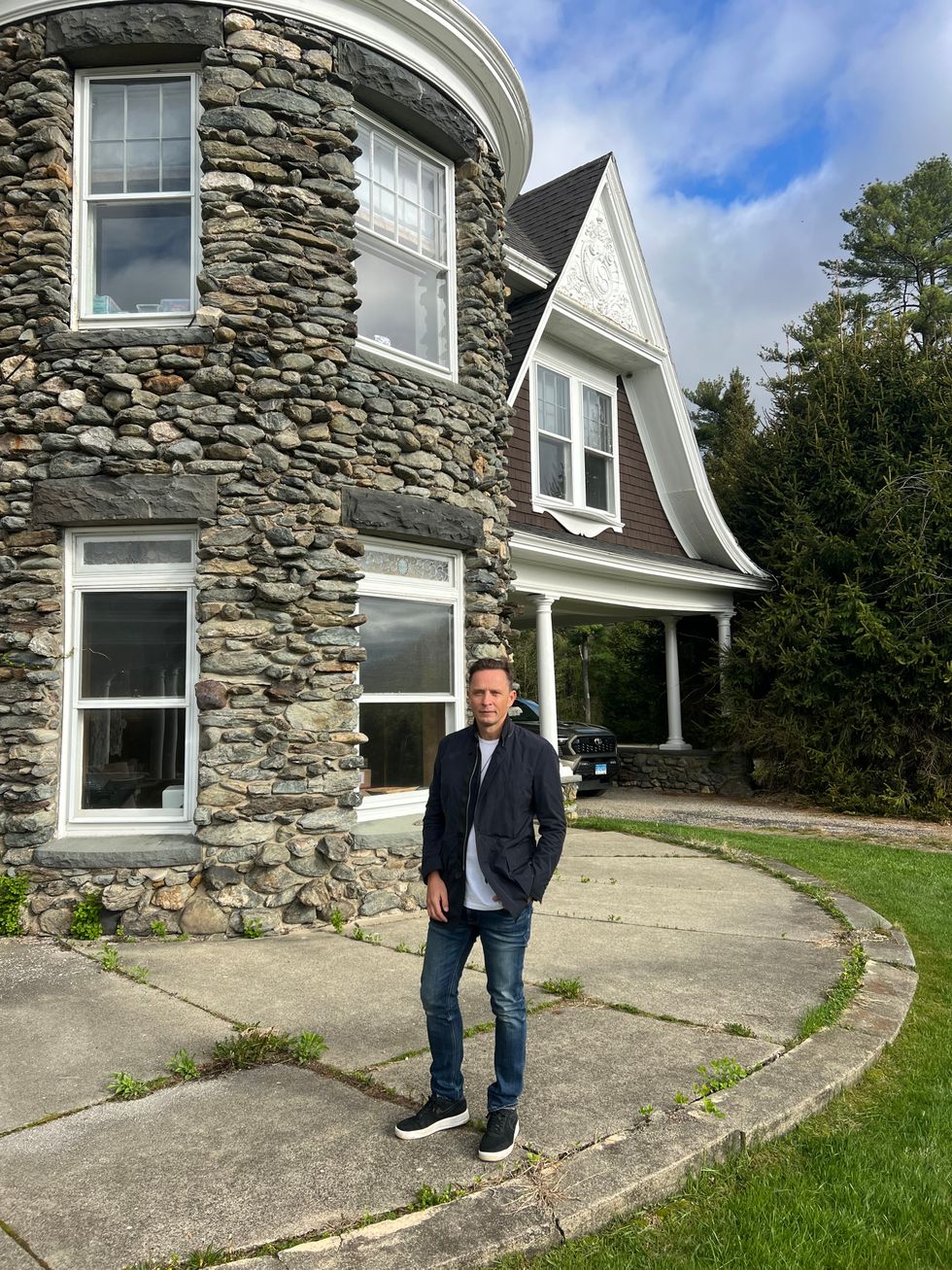
There are 11 other buildings on the property. Two are the homes of Davies, Murray and their families. The central communal space (separate from the dining room) has been equipped with a cutting‑edge audio system designed by local business A for Ara. Together with one of the largest gongs in the Northeast and Tibetan singing bowls, this space can host groups up to 80 for sound meditations and other curated musical experiences that facilitate healing, relaxation and personal growth.
There are accommodations for 60 people in four buildings, with plans to add more. The beautifully renovated guest rooms are decorated in earth tones in a peaceful, minimalist style, with large windows that showcase the spectacular natural surroundings.
Visitors to The Thyme — whether for day trips or longer stays — will have spectacular views of mountains, rolling hills, a pond, streams and a beautiful walking trail. The Appalachian Trail awaits just down the road from the campus for more serious hikers.
To prepare the property and buildings, the team at The Thyme has hired a number of local workers — landscapers, carpenters, designers. As The Thyme sets up its programs, it’s also hiring specialists such as masseuses. In addition, the center has welcomed core staff members as full‑time residents to head up kitchen operations, music programs and other guest offerings.
Davies and Murray have already been welcoming a mix of generations to The Thyme and have put multigenerational programming at the heart of their offerings, focusing on research showing that strong community connection boosts well‑being. A recent family weekend was attended by guests ranging from newborns to people in their eighth decade.
For more on its programs or to inquire about using the space, visit thethyme.co or email hello@thethyme.co